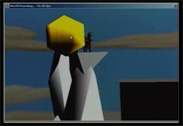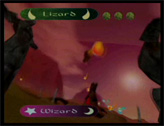-
treat
art and sound resources like any piece of code: check them into
CVS!
-
provide
a scalable feature-set and development cycle (if the world ends
tomorrow..., prototype)
-
ensure
hard deadlines and clear-cut goals for non-user testable milestones
(more detail than "complete")
-
adding
ownership and accountability for tangible elements reinforces production
and delivery cycle
-
managing
artistic direction with deliverables and deadlines needs to come
from either one experienced source, or complimentary roles in the
team (technical dir/creative dir)
-
having
at least two developers working in close quarters/with overlapping
subject areas allows technical direction to continue fairly smoothly
if a resource becomes unavailable for a period
-
peer-review
and architectural brainstorming shorten the testing/debugging cycle
and increase quality
-
poor
communication from feature manager to developer can result in unnecessary
effort and misdirected bandwidth (nice effects v/ just working)
-
process
streamlining is critical for iterative development (PSD macros and
art pipeline)
-
foresight
to leverage preliminary materials with polish allows production
to continue at a consistent rate and prevents bottlenecks or setbacks
- even very talented
members will encounter roadblocks or setbacks, projecting for schedule
slips is an art
- in development
intensive periods with thin bandwidth constraints, mini-focus meetings
and evolutionary punchlists are key for optimizing development work
in stages that build with heavy iterative dependency


